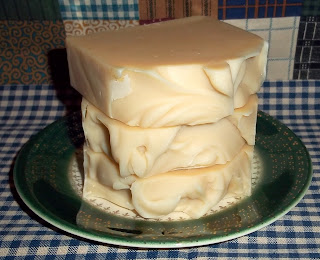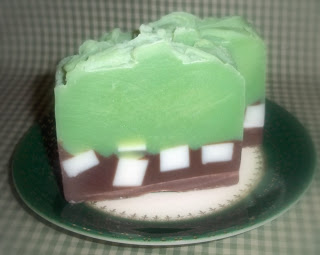There are several ways to incorperate goats milk into your soap recipe. As with other milks, I like to use a half and half technique. That's why I like to use double strength canned goats milk. (that and because I don't have access to fresh milk) I use pretty much the same recipe that I normally use only replacing half the water with milk and adding honey, shea butter and vitamin e at trace.
I start by adding my lye to the 1/2 water. (in the form of ice)
I heat my honey to make it more fluid, then add it and the vitamin e to my goats milk so they can all be added at once when my soap reaches trace.
when my lye/water and oils are fully emulsified and begin to trace I add my goats milk/honey/vitamin e blend.
Last but not least I add my shea butter. You'll notice the color change due to the milk, but not to worry it will normally change back as it sets up. Anyway, after blending the shea in completely it's ready to go in the mold.
I immediately sat my mold over the air vent and put a fan on it to prevent gel phase, because I'd like for this batch to stay nice and light. By the next day when it's ready to cut it has changed back to a nice creamy color.
And here are the cut pictures.



















































